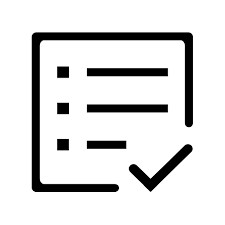
Overview
The course will help the participants to learn the importance of static testing activities, utilize test design techniques and incorporate test management practices within an organization.

Objectives
At the end of ISTQB testing training course, participants will be able to

Prerequisites
- Prior knowledge of the software development process
- Programming languages and concepts

Course Outline
- Assessing the goals of testing
- Identifying causes of software defects
- Organizing testing processes
- Planning
- Controlling
- Analyzing
- Designing
- Implementing and executing
- Evaluating exit criteria and reporting
Key objectives of testing
- Defining the inspection process
- Implementing test levels
- Component
- Integration
- System
- Acceptance
- Regression
Recognizing key concepts in maintenance testing
- Identifying reasons for maintenance testing
- Performing maintenance testing
Comparing the four test types
- Functional
- Nonfunctional
- Structural
- Retesting
Coping with the psychology of testing
- Contrasting the mindset of developers and testers
- Deciphering levels of independence
Determining when to apply each technique
- Communicating assignments during reviews
- Comparing formal and informal reviews
- Discussing the types of review
- Walkthrough
- Inspection
- Technical
Differentiating various “specifications”
- Evaluating test design
- Creating test cases
- Testing procedure
Applying specification-based techniques
- Equivalence partitioning
- State transition
- Boundary value analysis
- Use case
- Decision table
Utilizing structure-based techniques
- Analyzing statement co-coverage
- Comparing decision co-coverage vs. condition co-coverage
Deploying experience-based knowledge
- Detecting problems based on intuition
- Leveraging experience and knowledge
The importance of a test policy
- Defining goals and objectives
- Assigning roles and responsibilities
- Independence
- Test leader
- Tester
Structuring a test plan
- Writing a test plan
- Identifying objectives
- Assessing the entry and exit criteria
- Assigning appropriate resources
- Resolving defects
Interpreting a test summary report
- Evaluating summary report content
- Applying common metrics
Managing incidents
- Recording issues
- Analyzing defects
- Closing the incident
Addressing project and product risks
- Contractual
- Organizational
- Technical
- Assess
- Determine
- Implement
Classifying different types of test tools
- Test management
- Static testing
- Testing plan and report specification
- Executing and logging
- Performance and monitoring
Introducing a tool into an organization
- Recognizing potential benefits and risks
- Considering special circumstances


 Projects
Projects Assignments
Assignments









